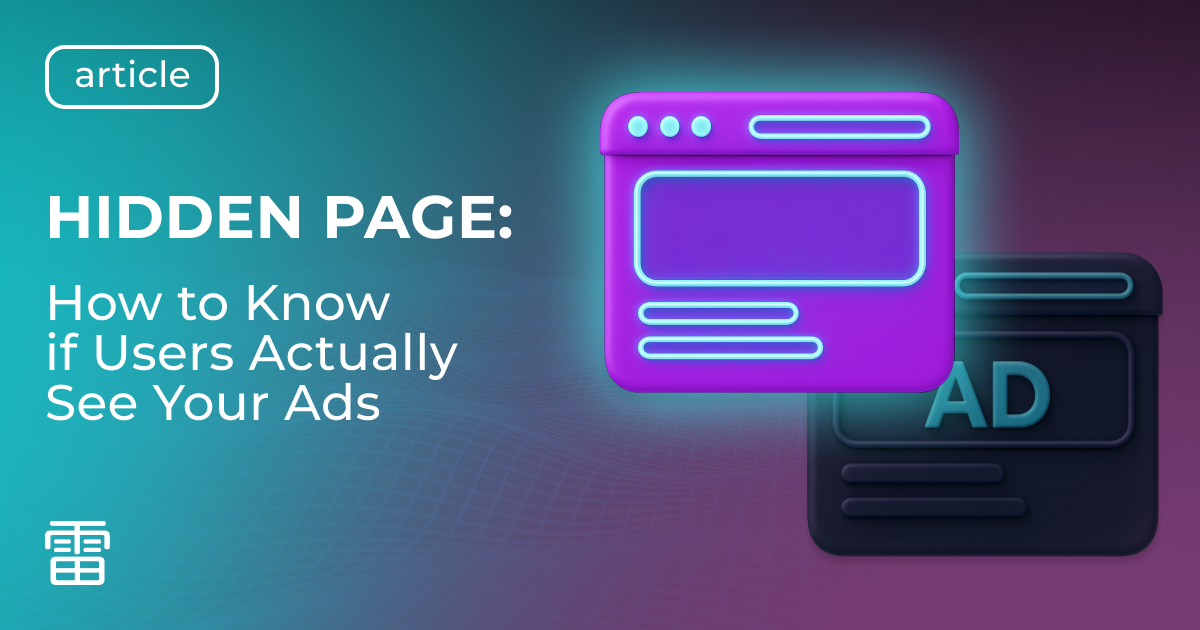In the online advertising ecosystem, there’s a growing problem: a page technically opens, but the user never sees it. Reports may look fine – there’s a click, a page load, even session time data – yet the tab opened in the background without any real user interaction.
For these cases, Kaminari Click uses the Hidden Page metric – an indicator that shows whether the ad page opened in an active browser tab (visible to the user) or in a hidden tab (invisible, for example during popunder behavior).
This metric helps to:
- distinguish real visits from technical background loads
- detect format substitution (e.g., push traffic behaving like popunder)
- measure the genuineness of user interaction with ad content
What Hidden Page measures
Hidden Page = True – the page opened in a hidden (inactive) tab
Hidden Page = False – the page opened in an active tab (visible to the user)
How it works:
- if the ad opens in a new but inactive tab → True
- if the tab is immediately active → False
- even instant transitions are marked as hidden if the tab never becomes active
- switching between tabs or apps doesn’t affect the result – the system records the moment of opening
Behavior across formats
Popunder
Typical popunder behavior means the page opens in the background, so Hidden Page = True is an expected result.
Popup
Popup ads open in the foreground. For them, Hidden Page = False, meaning the user actually sees the page.
Push traffic
Real push notifications always open in an active tab.
- Hidden Page = False → legitimate push
- Hidden Page = True → format substitution (a popunder disguised as push)
Such cases often involve hidden iframes or auto-redirects – visible to the system but invisible to the user.
Practical applications
The Hidden Page metric helps verify traffic sources and assess the real quality of traffic:
Hidden Page > 90% in a push campaign → Likely format substitution (popunder instead of push). Recommendation: Review the partner, request integration details.
Hidden Page ≈ 0% → Proper format implementation, user sees the page. Recommendation: Normal.
High Hidden Page rate on display or native traffic → Possible hidden loads or iframe manipulation. Recommendation: Audit the source site.
Case example
A partner claimed to be delivering pure push traffic. After analysis, 96% of visits had Hidden Page = True.
It turned out the source used a popunder script instead of actual push notifications. The result was a high share of inactive tabs, zero conversions, and wasted budget.
After adjusting traffic sources, quality improved and monthly spend dropped by tens of thousands of dollars.
Conclusion
Hidden Page is a key metric for understanding real user engagement. It shows not just whether a click occurred, but whether the user actually saw the page.
For ad networks and advertisers, this is one of the most important transparency indicators. It helps distinguish genuine user attention from technical imitation and protects marketing budgets from low-quality traffic.
Integrating Hidden Page into Kaminari reports enables teams to compare sources objectively, validate partners, and maintain full visibility over what’s really happening with their traffic.

